This February and March, we’re taking a trip back in time to review the fourth season of The X-Files and the first season of Millennium.
Appropriately enough, Sanguinarium is a bloody mess of an episode.
To be fair, it’s not a total write-off. There are some interesting ideas here, and the episode’s willingness to indulge in trashy horror is almost endearing… to a point. However, Sanguinarium often serves to illustrate just how much care and consideration is necessary to make an episode of The X-Files work. It is a very effective counter-example, an episode that demonstrates it takes more than just pulpy horror to make an episode work. Sanguinarium is almost as revolting and as graphic as Home, but it lack all the little elements that made the earlier episode work.
It’s cheesy instead of wry. It’s gratuitous instead of simply hyperactive. It’s blunt instead of subversive. Sanguinarium is not a misfire to the same extent as – say – Teso Dos Bichos or Excelsis Dei. It has a few ill-judged elements, but it’s more clumsy than offensive. It might be a bit much to suggest that there’s a classic episode buried just beneath the surface of Sanguinarium, but it seems fair to say that there is a much better episode somewhere in here. One suspects that pressure behind the scenes simply made it tougher to bring that episode to the fore.
Nevertheless, Sanguinarium is an interesting failure, if not quite a satisfying episode.
On the surface, Sanguinarium has a lot of elements that really should work. It is like a cocktail of popular X-Files episodes, one that arguably serves to illustrate just how difficult it is to balance all the necessary elements. It has a pretty great guest star in Richard Beymer, one of the stars of West Side Story. It has a pretty wonderful setting in the cosmetic surgery department of a major hospital. It has a willingness to go very visceral, visual horror. It has satire. It has witches.
And, yet, none of these elements really land. Beymer barely registers as a character, serving more as a vaguely-defined bad guy who spends the first half of the episode disguised as a victim and then cuts his own face off with a fork. Because he has super plastic surgery powers, or something. The hospital setting feels thinly sketched. The gore seems to serve to distract from the weakness of the plot, rather than augmenting an intriguing story. The humour and social commentary are all very obvious. The Wiccan elements of the plot feel cliché and trite, handled in a way that is clumsy if not quite insensitive.
According to I Want to Believe, production on Sanguinarium was particularly unpleasant experience, with the script frequently changing direction during pre-production. It was the first television script produced by the sister-sister team of Valerie and Vivian Mayhew:
“It would be a while before we got the story right – and Sanguinarium evolved with input from the entire X-Files team,” says Valerie Mayhew, the younger and more talkative of the pair. “We did have some of our own ideas, but one of the things we did was bounce some of them off of Glen Morgan and James Wong. And they kept saying to us, ‘The scariest things are the most everyday things. So – what’s scary?’ And during one of these conversation, Vivian was paged. She didn’t recognize the phone number, but she called it anyway. And we said: ‘Isn’t that interesting? That could have been anybody on the other end of the line.’We’re so accessible via modern technology. You’re connected to a completely unknown person who can influence your behavior as soon as you pick up the phone.”
She adds, “So – pagers are scary. That was first idea for the episode. But who uses pagers? Doctors use pagers. We all go to the doctor. We all hate hospitals. And doctors are someone you don’t want to be influenced; you don’t want to have them lose control of their faculties. So what would happen if doctors lost control? And why would they lose control? Well, of course, if they were bewitched. But who would bewitch a doctor? And why?”
This hints at a rather haphazard development cycle for Sanguinarium, with many of the intermediate elements jettisoned from the final cut of the episode. It is easy to see how the episode ended up somewhat muddled.
It goes without saying that television is a high-stress environment, even when creative energy isn’t being diffused across two hugely important shows. Discussing his experience with The X-Files, writer Frank Spotnitz recalled that so much time was spent frantically re-writing the episodes as they went through production:
I met some writers, really successful writers, who came and went. They said, “You know what? I just don’t want to work this hard. It’s just not worth it to me. I’ve got my life. I’ve got blah, blah, blah.” Everybody who made it on The X-Files killed themselves to make it as good as it can be. The truth is, that’s what you have to do. There aren’t enough hours to do it. We were rewriting to the last second, rewriting it while we’re editing the shows. You’re never satisfied, and that’s the work ethic you need.
In many ways, television is a fascinating intersection of art and commerce. For all that writers, producers and directors might want to make something memorable and worthwhile, they are constantly staring down the clock in order to reach the broadcast deadline.
Talking to Rolling Stone in February 1997, Carter lamented the difficulty in finding writers who could do that work unsupervised and unassisted:
I’m really tired. I wish there were more good X-Files writers. There are very few people who have proved they can do it. That’s why it’s been so hard. I think with Millennium, I’ve created not only a good show but a problem for myself in that it requires more work. And so, because I can’t stand to do anything halfway, I’ve handed myself more work. It’s a collaborative process. You need good people to actually succeed, and you risk killing yourself if you don’t have them. I’d say I’ve written a third of all X-Files episodes. And last year I wrote or rewrote 20 of 24. I was on a round-table discussion with Stephen Bochco, and he said that when he was doing Hill Street Blues, they had six guys who could do an episode start to finish. That’s unheard of these days. You just don’t have that breadth of talent available to you. Anybody who can write drama now has their own show or a pilot deal, or something. The reality is, it’s very hard to get a group of people together to make something real, to make something right.
Sanguinarium was the first television episode written by Vivian and Valerie Mayhew, and it wound up drawing a lot of time and effort from the rest of the staff to get it into a shape where it could be filmed and broadcast. According to I Want to Believe, Howard Gordon, Vince Gilligan, Glen Morgan and James Wong all chipped in to help.
One can see the influence of Morgan and Wong on the finished episode, even if Vivian and Valerie Mayhew’s relative lack of experience shines through. Indeed, the scenes with the corrupt hospital management team play a lot like the scenes with the satanic school board in Die Hand Die Verletzt, aiming for that same surreal blend of the banal and the horrific – lots of innuendos and contrasts that are intended to generating laughs through clever juxtaposition. (After all, the best part of imaging any vast satanist conspiracy is imagining the boring logistical work involved, the day-to-day running of the scheme.)
Sanguinarium dabbles in witchcraft specifically, and the script bends over backwards to make sure that the audience is aware of that. “If we give any credence or credibility to Dr. Lloyd’s story, they’re going to burn us at the stake,” Doctor Kaplan notes, in a particularly on-the-nose line during his board meeting. Of course, the twist is that most of the featured plastic surgeons are not actually involved in the occult. It’s a double-bluff that might seem clever if the script didn’t over-egg the pudding.
The problem is that Sanguinarium seems to do nothing but push its ideas relentlessly, past the point where they are endearing or effective. When Mulder and Scully discover that Nurse Waite is a practising Wiccan, they discover a broom resting outside her door. “Probable cause?” Mulder quips, in a witty line. The problem is that the episode also chose to cycle the sound of a cat into background of the scene where Mulder and Scully arrive on the property. There are points where it seems like Sanguinarium is desperately afraid that the audience might not get the joke, or the gag, or the point.
This is arguably the case with the episode’s high gore content. Sanguinarium is at least as visceral as Home. To be fair, the opening sequence is effective because it comes out of nowhere. It is a very nasty, very effective piece of work. However, the rest of the episode repeats the trick (almost literally) ad nauseam – Sanguinarium is formulaic, introducing a new patient once every seven or eight minutes so it can kill them off in a graphic way. The viewer knows when most of the deaths are coming – whenever anybody goes into surgery – so the only thing the episode can do is to try to scare its audience with graphic imagery.
To be fair, the trick works reasonably well. Sanguinarium commits to being a very gory episode of The X-Files. It doesn’t pull its punches. Kim Manners proved with Home that his style lent itself to these sorts of graphically gonzo adventures, and the episode is very good at getting the audience to wince when it wants them to wince. The death sequences are very well realised, and there’s something almost endearing about how eager the episode is to shock. At one point, Doctor Franklin comes home to a literal blood bath. At another, a character vomits pins.
Again, the bluntness of Sanguinarium works against it. Generally, The X-Files trades well on ambiguity. Horror is generally better if it is only fleetingly glimpsed, lurking in the shadows. It is generally more effective to feel the consequences of an evil or impossible act than to see the act itself. The problem with Sanguinarium is that it just lays out everything out for the audience. The idea of a character having surgical equipment miraculously appear within their digestive tract is frightening. One need only imagine being cut open from the inside.
That horror is lost when it is preceded by a cheesy television effect of said medical equipment disappearing from a tray. The sequence where Doctor Franklin tries to murder Doctor Shannon should be horrifying, but it feels too goofy to really work. Similarly, when the episode decides to reveal that Doctor Franklin is the bad guy, it does so in the least subtle manner possible. It doesn’t intercut to Doctor Franklin meditating as Nurse Waite is murdered. Instead, it shows Franklin levitating off his bed as he rests. It’s a bit more showy than The X-Files usually is, and a little bit much. Surely he should be conserving his evil occult plastic surgery powers?
Sanguinarium is rather cartoon-ish in nature, which gives the episode a certain appeal – after all, it doesn’t take itself too seriously – but also undermines a lot of the potentially interesting subject matter. Set within the cosmetic surgery department of a major hospital, Sanguinarium really should feel like a vital and timely episode of The X-Files. In many ways, The X-Files feels like one of the defining shows of the nineties; here, it is tackling a defining issue of the decade. Sanguinarium really should resonate a lot better than it does.
It should be noted that cosmetic surgery encompasses a wide and diverse range of medical practices – from reconstructive surgery through to the treatment of serious and life-affecting medical conditions. However, it has been estimated that fifty-five million elective cosmetic surgeries will be performed in 2015. Indeed, it has been argued that cosmetic surgery is a reliable economic indicator – the better the economy, the more people spend on cosmetic procedures. Americans spent $11m on plastic surgery in 2012.
With advances in keyhole surgery making it easy to conceal surgical scars, cosmetic surgery was a boom industry during the nineties. It is estimated that there were over three million cosmetic surgery procedures conducted in America each year during the decade. In 2013, plastic surgeons were the seventh-highest ranked specialty in the United States, with an average income of $317,000 – significantly above the industry average of $230,000. It’s no wonder that the process can often feel like something of a “conveyor belt” to patients.
“This – this place is a veritable factory,” Scully reflects of the surgical operation in place. “Cosmetic surgery is the boom industry of the medical world. And ASU wards like this are a gold mine.” She adds, “And a brand new, state of the art facility like this can support an entire hospital.” Given that a large volume of these procedures are elective and expensive, it is easy to see the allure of cosmetic surgery to practitioners and hospitals at large. It is no wonder that the industry seems to attract more than its fair share of high-profile scandals or ethics discussions.
Of course, it also raises broader issues about society itself. “Everyone wants to be beautiful,” Doctor Shannon tells Mulder and Scully. Who gets to decide what “beautiful” really means? The final season suggests – somewhat bluntly – an answer. Having evaded Mulder and Scully in one of those typical “the monster is still out there” endings, Doctor Franklin interviews for a new job. “I like to say whoever God didn’t get around to creating in his own image, it’s our job to recreate in ours.” Cosmetic surgery essentially allows patients to re-build themselves so as to conform to societal expectations.
This raises very interesting questions about individuality and conformity in modern society. It also hits pretty close to some of the core themes of The X-Files. The show is very much a product of the nineties, and so is fascinated with the divide between the unique and eccentric world and the forces of homogeneity and globalisation. Doctor Franklin is precisely the kind of lurking danger that Doctor Blockhead alluded to at the end of Humbug. He is a man who threatens to take away the quirky and the odd, replacing it with a bland sameness that conforms to society’s expectations.
Indeed, Doctor Franklin’s objectives don’t seem too far removed from the larger conspiracy plot line – the threat to destroy individualism and introduce conformity through colonies of bees and armies of clones. That which is different must be purged and destroyed, broken down and redesigned. The black oil represents a pervading and infectious sameness. As such, an episode dealing with cosmetic surgery and the social context of the industry should strike right at the heart of what The X-Files is, resonating with the show’s big philosophical ideas.
Unfortunately, Sanguinarium ultimately falls a little flat. We get a nice recurring gag about Mulder’s insecurity about his nose – proving even somebody who looks like David Duchovny could be insecure – but that is about it. Sanguinarium is too busy throwing the corn syrup around to offer an insightful or probing look at what this “boom industry” has to say about America in the nineties. It is a concept that could have been done so much better, one ripe for exploration and development.
It is also worth noting that Sanguinarium deals overtly with witchcraft. Wicca was on the cusp of breaking into the mainstream in November 1996. Witchcraft was a hot topic in cinemas and on television. The Craft had been released in May 1996, featuring a coven at a high school. Sabrina the Teenage Witch had made its television début towards the end of September 1996. Buffy: The Vampire Slayer would launch the next year, featuring a prominent witch in the cast. Charmed would appear on television sets the year after that, featuring a trio of witches.
The relationship between these pop culture portrayals and the actual Wiccan religion was often fraught. Though described as Wicca’s “coming out” movie, The Craft attracted considerable criticism from Wicca groups. The characterisation of Willow on Buffy: The Vampire Slayer has also come in for some criticism from Wiccans. The episodes of The X-Files that dealt with witchcraft and the occult were frequently criticised by on-line fines frustrated with the portrayal of these religious philosophies.
However, there was a broader sense that pop culture was at least trying to engage. As Jason Winslade has argued, Sanguinarium takes care to point out that the pentagram is a symbol of protection rather than one linked with evil – even if it exists as something of a red herring in the context of the episode. Wicca was frequently used as a metaphor for tolerance or diversity – something that might seem different or unsettling, but was ultimately empowering and valid. The late nineties would see storylines dealing with Wicca on shows like J.A.G. and Judging Amy.
Despite (or perhaps foreshadowing) the fact that Valerie and Vivian Mayhew would both go on to work on Charmed, Sanguinarium only touches superficially on Rebecca Waite’s belief system. The show sets her up as a red herring for the first half of the episode, using her religion as the butt of some very obvious jokes. Once she’s served her purpose, she is unceremoniously killed off and the real villain steps to the fore. It’s a clumsy version of the same trick that The X-Files used to avoid appearing too insensitive in Fresh Bones, but the execution is considerably weaker here.
It is a shame that The X-Files wasn’t able to construct a better story around Wicca, or to engage with it more directly. After all, the surge in interest concerning witchcraft often served as a catalyst for discussions around feminism and female adolescent development. The Harry Potter series would do something similar for boys in February 1997. These sorts of stories could be clumsy and ham-fisted, but their hearts were in the right place. As with a lot of Sanguinarium, it feels like the show misses the mark a little bit.
Sanguinarium is an episode that might have benefited from a little more work – tighter supervision from more experienced members of the writing staff. The plot relies on considerable contrivance. Once the bodies start piling up, nobody thinks to stop the conveyor belt moving. “Any change in scheduling or workload is going to give the appearance of covering guilt,” Doctor Shannon offers by way of justification. “We can’t compromise our position on this.” Where is the hospital’s legal department in all this?
The X-Files has a very different standard of suspension of disbelief than most other shows. However, even bearing that in mind, it seems a little weird that Doctor Franklin should not only be able to find four patients with birthdays that fall on specific feast days, but that he is able to manipulate the schedule so as to get them all into surgery at the right time with the right doctors. It feels like the sort of plot point that needs a hand wave or a sly acknowledgement, but just winds up feeling massively contrived.
Sanguinarium is a mess of an episode. It has some good ideas, but no real sense of what to do with any of them. It’s the kind of episode that demonstrates just how much pressure The X-Files was under at this stage, and a reminder of how television often seems to find itself pushing against deadlines.
You might be interested in our other reviews of the fourth season of The X-Files:
- Herrenvolk
- X-tra: Season One (Topps) – Pilot
- X-tra: (Topps) #17 – Thin Air
- Home
- X-tra: (Topps) The Silent Blade
- X-tra: (Topps) #18-19 – Night Lights
- Teliko
- Unruhe
- X-tra: Millennium – Pilot
- The Field Where I Died
- X-tra: Millennium – Dead Letters
- Sanguinarium
- X-tra: (Topps) #23 – Donor
- Musings of a Cigarette-Smoking Man
- X-tra: Millennium – 5-2-2-6-6-6
- Tunguska
- Terma
- X-tra: (Topps) #24 – Silver Lining
- Paper Hearts
- El Mundo Gira
- X-over: The Simpsons – The Springfield Files
- X-tra: (Topps) #25-26 – Be Prepared
- Leonard Betts
- Never Again
- Memento Mori
- Kaddish
- Unrequited
- Tempus Fugit
- X-tra: Millennium – Lamentation
- Max
- Synchrony
- Small Potatoes
- Zero Sum
- Elegy
- Demons
- X-tra: (Topps) #30-21 – Surrounded
- Gethsemane
- X-tra: (Topps) #32 – Crop Duster
- X-tra: Season One (Topps) – Deep Throat
- X-tra: Millennium – Paper Dove
Filed under: The X-Files | Tagged: cosmetic surgery, deadlines, gore, graphic, image, kim manners, perception, plastic surgery, Television, the x-files, valeria mayhew, vivian mayhew, wicca, writing, x-files |
















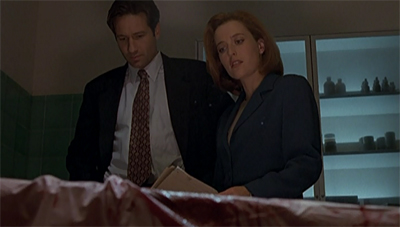
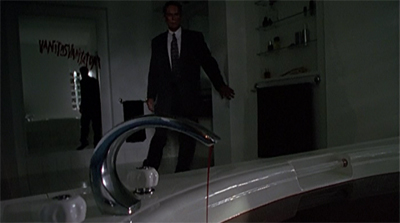
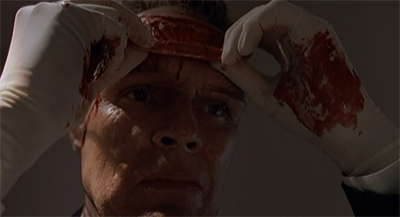





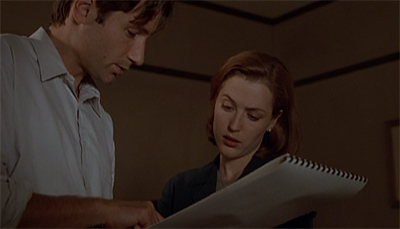
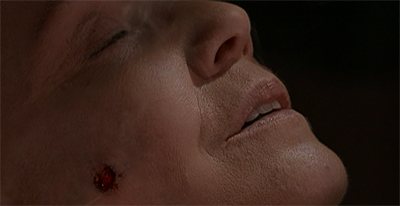

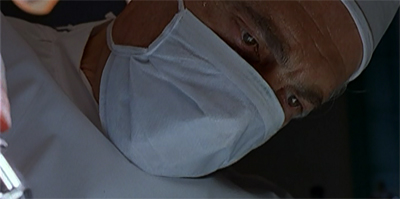
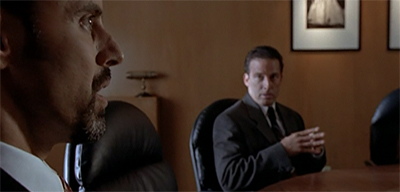
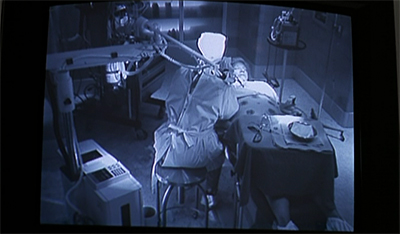
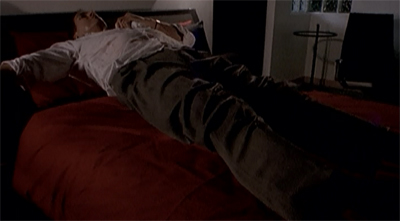
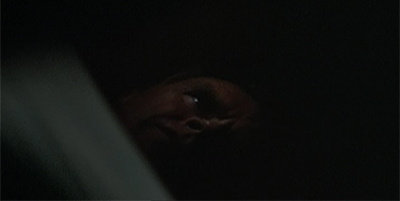





Leave a comment